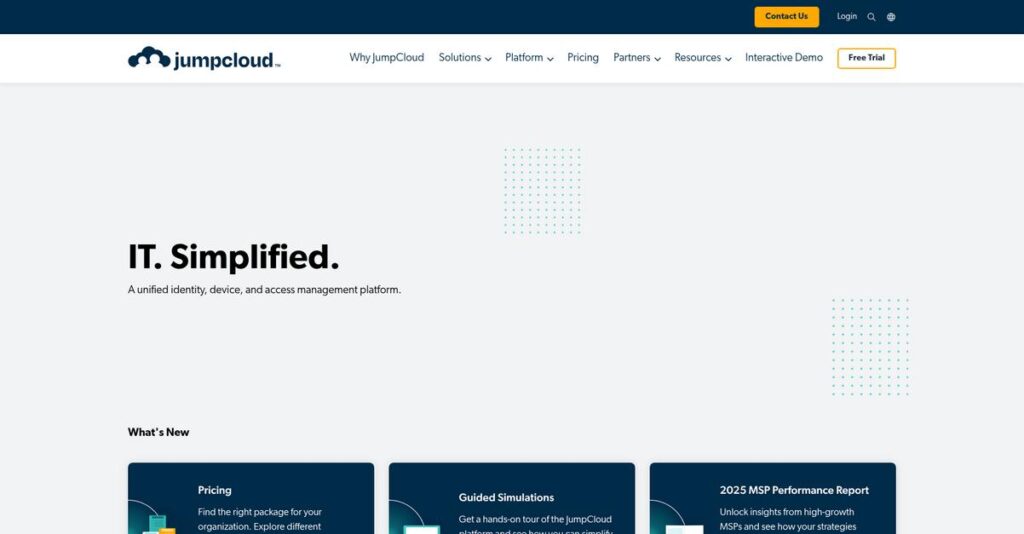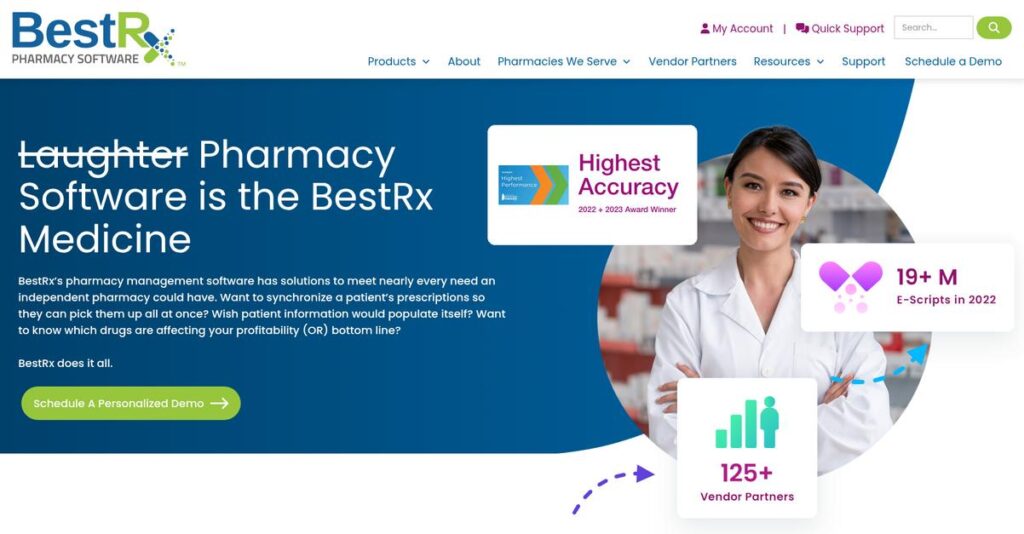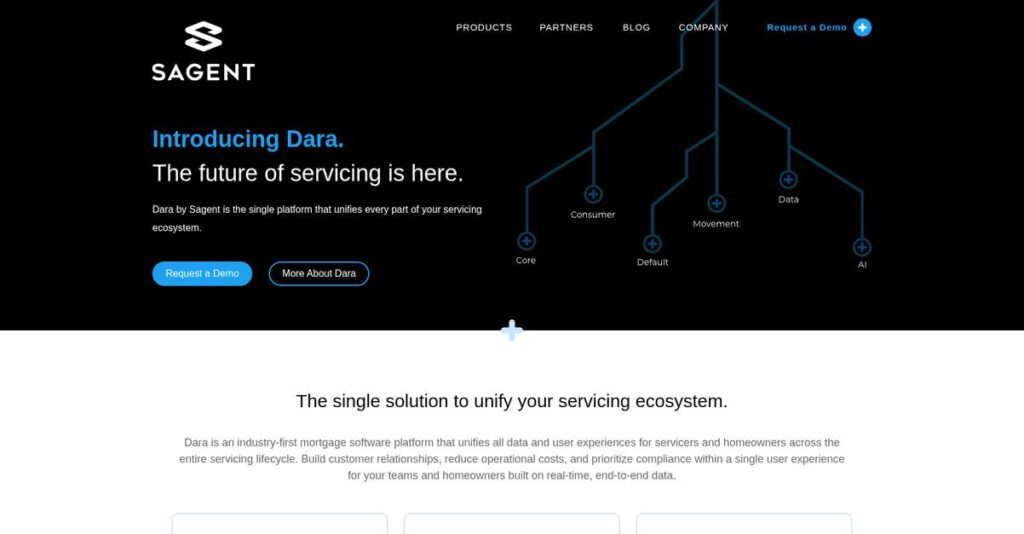Too many logins making IT a headache?
If you’re evaluating identity and device management tools, it’s easy to get lost figuring out which solution will actually cut down your admin work and secure your environment.
The real problem? You’re wasting hours toggling between systems just to manage user access, and that daily hassle quickly turns into security gaps and frustrated staff.
JumpCloud tackles this by letting you handle identity, device, and access management from one unified, cloud-based platform—no on-prem servers or clunky integrations required. With powerful SSO, MFA, MDM, user provisioning, and real Zero Trust policies built in, JumpCloud goes beyond old-school directory tools.
In this review, I’ll break down how JumpCloud can actually reduce your IT workload while protecting your organization’s data and devices.
You’ll get my full JumpCloud review, with hands-on insights covering features, pricing, setup hurdles, and which alternatives stack up for your needs.
Expect a deep dive into the features you need to make a confident, informed evaluation.
Let’s get started.
Quick Summary
- JumpCloud is a cloud-based directory platform that centralizes identity, access, and device management across diverse IT environments.
- Best for IT administrators and MSPs managing hybrid or multi-OS infrastructures seeking simplified cloud-based control.
- You’ll appreciate its unified platform that reduces vendor complexity and strengthens security with MFA and conditional access policies.
- JumpCloud offers flexible per-user pricing with a free tier and 30-day trial, though costs can grow in large deployments.
JumpCloud Overview
JumpCloud’s mission is to simplify modern IT with its open directory platform. Based in Colorado, they’ve been around since 2012, purpose-building a comprehensive cloud-native alternative to traditional Active Directory.
In my experience, their core strength is serving mixed-OS and cloud-forward companies. They aren’t just for Windows-only shops; they truly excel where your IT team needs to manage Mac, Linux, and remote devices from one unified console.
You’ll see their commitment to innovation through this JumpCloud review. Their recent focus on passwordless login and patch management shows they are solving the real-world problems administrators like you face daily.
- 🎯 Bonus Resource: If you’re also looking into optimizing your website’s performance, my guide on uncover user behavior and lift conversions offers valuable insights.
Unlike competitors specializing only in identity (like Okta), JumpCloud bundles it all. I believe their unified identity and endpoint management is their strongest differentiator, simplifying administration and helping consolidate what is often a messy and expensive tech stack.
They support over 200,000 organizations globally, including high-growth tech startups and mid-market businesses that need to secure a distributed workforce without the heavy expense and complexity of legacy IT.
Their strategic direction is clear: making Zero Trust security a practical reality for your business. They’re betting that a single, integrated platform for identity and device control is absolutely essential for securing modern work.
Let’s dive into their features.
JumpCloud Features
Is your IT team drowning in disjointed tools?
JumpCloud features unify identity, access, and device management, which can simplify your entire IT infrastructure. Here are the five main JumpCloud features that solve critical IT management problems.
1. Cloud Directory Services
Struggling with fragmented user identities?
Managing user access across different systems can be a nightmare, leading to security gaps and wasted time. This often complicates provisioning for new hires.
JumpCloud’s Cloud Directory Services centralize user and identity management, eliminating the need for on-premise servers. From my testing, managing user identities from one location simplifies access control significantly. This core feature allows you to provision and deprovision users across devices and applications effortlessly.
This means you can streamline user management, ensuring consistent access and tighter security policies for your entire organization.
- 🎯 Bonus Resource: While we’re discussing IT management, understanding how to streamline post-sales operations with after sales service management software is equally important.
2. Single Sign-On (SSO)
Tired of password fatigue and endless logins?
Users constantly forgetting passwords or juggling multiple credentials wastes time and creates security risks. This slows down daily productivity for everyone.
JumpCloud’s SSO feature streamlines access to multiple applications with a single set of credentials. What I love about this approach is how it supports SAML 2.0 and SCIM protocols, making it compatible with most web applications. This feature truly enhances user experience and reduces support tickets.
The result is your team gains efficient, secure access to all their tools, minimizing login frustrations and boosting overall work output.
3. Multi-Factor Authentication (MFA)
Worried about basic password security vulnerabilities?
Relying solely on passwords is a huge risk, leaving your systems vulnerable to breaches. This can keep IT admins up at night.
JumpCloud offers robust MFA capabilities, including their JumpCloud Protect mobile push MFA solution, to enhance security across all systems. This is where JumpCloud shines, enabling Zero Trust security postures based on device and network trust. This feature ensures that users verify their identity with multiple methods.
So as an IT manager, you can confidently fortify your security against unauthorized access, safeguarding sensitive company data effectively.
4. Device Management (MDM)
Can’t centrally manage your diverse device fleet?
Controlling Windows, macOS, and Linux devices separately is inefficient and costly, especially with remote workforces. This can make updates a chore.
JumpCloud’s MDM provides cross-platform device management, including System Insights, Patch Management, and Software Management. I found that automatically deploying and updating software remotely is incredibly efficient. This feature allows you to manage and secure all your devices from one unified console.
This means you can maintain a secure, compliant device fleet effortlessly, ensuring all endpoints are protected and up-to-date, no matter where they are.
5. Conditional Access/Zero Trust Policies
Struggling to enforce granular security policies?
Allowing broad access based only on basic login credentials exposes your organization to significant risks. This leaves your valuable data vulnerable.
JumpCloud offers top-tier Conditional Access and Zero Trust policies that enforce security based on device trust, location, and network trust. From my evaluation, the ability to restrict access to only trusted users and devices is incredibly powerful. This feature is crucial for maintaining a strong security posture in today’s remote-first world.
This means you get peace of mind knowing only verified users on compliant devices can access sensitive resources, drastically reducing your attack surface.
Pros & Cons
- ✅ Unifies identity, access, and device management in a single platform.
- ✅ Provides excellent cross-platform support for Windows, macOS, and Linux.
- ✅ Setup is notably straightforward, especially for unifying existing systems.
- ⚠️ Pricing can become significantly expensive as user count scales up.
- ⚠️ Official technical support consistency and responsiveness can vary.
- ⚠️ Advanced features sometimes require familiarity with PowerShell APIs.
These JumpCloud features work together to create a cohesive, cloud-native IT management platform that empowers you to manage your entire IT infrastructure from a single pane of glass.
JumpCloud Pricing
Thinking about what JumpCloud will actually cost?
JumpCloud pricing is quite transparent, offering multiple tiers with clear per-user costs and discounts for annual billing, making it straightforward to assess.
| Plan | Price & Features |
|---|---|
| Free Tier | No Cost • Up to 10 users & 10 devices • Full platform capabilities • Live chat for 10 days |
| SSO Package | $7/user/month (billed annually) • Core Cloud Directory • MFA & Comprehensive SSO • Password Manager Tool |
| Device Management Package | $9/user/month • Cross-Platform MDM • System Insights & Patch Management • Software Management & Remote Access |
| Core Directory Package | $11/user/month (billed annually) • All SSO Package features • Access Management • Directory Insights & Logging |
| Device Identity Package | $13/user/month • All Device Management features • Core User Identity Management • MFA for Device Logins |
| Platform Package | $15/user/month (billed annually) • All lower tier features • Comprehensive Device Management • Advanced Telemetry |
| Platform Prime Package | $22/user/month (billed annually) • All Platform Package features • Conditional Access/Zero Trust • SaaS Management |
1. Value Assessment
Great pricing transparency here.
From my cost analysis, JumpCloud offers strong value, especially if your business needs both identity and device management. Their per-user model allows for predictable budgeting, and the integrated approach avoids needing multiple tools. What I found impressive is how their pricing scales effectively.
This means your budget gets a comprehensive solution without the hidden costs of managing disparate systems.
- 🎯 Bonus Resource: Speaking of streamlined operations, my guide on best vaccine management system covers distribution efficiency.
2. Trial/Demo Options
Smart evaluation approach available.
JumpCloud offers a generous free tier for up to 10 users and a 30-day free trial for their paid tiers, giving you ample time to evaluate. What I found valuable is how the trial provides full access to test their comprehensive features, ensuring it fits your operational needs before commitment.
This lets you validate ROI and user adoption before spending money, reducing the risk of expensive software mistakes.
3. Plan Comparison
Choosing the right tier matters.
For basic identity needs, the SSO or Core Directory packages offer good value, while the Device Management package is specific for MDM. What stands out is how the Platform and Platform Prime tiers unify IT management, offering comprehensive solutions for growing businesses.
This tiered approach helps you match pricing to actual usage requirements rather than overpaying for unused capabilities.
My Take: JumpCloud’s pricing strategy focuses on transparent, per-user costs, making it ideal for small to mid-size businesses that want predictable IT management expenses without sacrificing robust features.
The overall JumpCloud pricing reflects transparent value for integrated IT management solutions.
JumpCloud Reviews
What do real customers actually think?
To help you understand real-world user experiences, I’ve analyzed numerous JumpCloud reviews, distilling common sentiments and patterns from actual customer feedback to give you a balanced perspective.
1. Overall User Satisfaction
Users seem generally satisfied.
- 🎯 Bonus Resource: Before diving deeper, you might find my analysis of Medical Practice Management Software helpful.
From my review analysis, JumpCloud generally receives positive feedback, with users often praising its user-friendly interface. What impressed me about the user feedback is how specific customers get about setup ease, often rating it highly on platforms like G2.
This suggests you can expect a relatively smooth onboarding process.
2. Common Praise Points
The unified platform consistently earns praise.
Users frequently laud JumpCloud for its all-in-one approach to identity, access, and device management, reducing the need for multiple vendors. From customer feedback, cross-platform support and flexible policy management are repeatedly highlighted as major advantages, simplifying IT tasks.
This means you can streamline management across diverse operating systems and centralize control effectively.
3. Frequent Complaints
Cost at scale often causes frustration.
While the entry point is appealing, many JumpCloud reviews mention that the per-user pricing, especially with premium tiers, can become expensive for larger organizations. What stands out in feedback is how official support inconsistency also remains a recurring theme, causing some user dissatisfaction.
These limitations are important to consider, especially if you anticipate rapid growth or require extensive support.
What Customers Say
- Positive: “We immediately recognized JumpCloud as the solution to secure and manage our devices remotely.” (JumpCloud user review)
- Constructive: “Many features are hidden behind PowerShell APIs, which can be challenging for administrators not familiar with PowerShell.” (JumpCloud user review)
- Bottom Line: “JumpCloud provides substantial time-saving ROI through user management efficiencies and cost-effective infrastructure support.” (JumpCloud user review)
The overall JumpCloud reviews reveal genuine user satisfaction with practical reservations about cost and support.
Best JumpCloud Alternatives
Which JumpCloud alternative truly fits your needs?
The best JumpCloud alternatives include several strong options, each better suited for different business situations, existing IT infrastructure, and specific security priorities you might have.
1. Microsoft Entra ID (formerly Azure Active Directory)
Heavily invested in the Microsoft ecosystem?
Microsoft Entra ID is ideal if your organization is already deeply integrated with Windows, Active Directory, and Azure services. From my competitive analysis, Entra ID offers seamless integration within Microsoft’s environment, making it a natural fit if you prioritize that synergy, though its flexibility outside Microsoft is limited.
- 🎯 Bonus Resource: While we’re discussing IT infrastructure and security, understanding problem management software is equally important for operational excellence.
Choose Microsoft Entra ID when your core infrastructure is primarily Microsoft-based and requires deep native integration.
2. Okta
Primarily focused on cloud app security and SSO?
Okta excels for large enterprises focused on cloud application identity and access management, offering a vast array of pre-built app connectors and extensive SSO capabilities. Alternative-wise, Okta provides broader cloud app integration options, though it may require additional tools for comprehensive device management compared to JumpCloud.
Consider Okta if your priority is extensive cloud app SSO and advanced IAM for a large-scale, cloud-first environment.
3. OneLogin
Need advanced authentication and Active Directory integration?
OneLogin emphasizes a wider range of authentication methods, including passwordless, and robust integration with existing Active Directory environments for enhanced security. What I found comparing options is that OneLogin offers more advanced security features and seamless AD integration, which can be crucial for strengthening your security posture.
Choose OneLogin if your organization requires diverse authentication methods and has a strong commitment to Active Directory.
Quick Decision Guide
- Choose JumpCloud: Unified identity, access, and device management for hybrid environments
- Choose Microsoft Entra ID: Deep integration for Microsoft-centric organizations
- Choose Okta: Extensive cloud app SSO and IAM for large enterprises
- Choose OneLogin: Advanced authentication and Active Directory integration needs
The best JumpCloud alternatives depend on your existing IT infrastructure and specific security focus.
JumpCloud Setup
What about the actual implementation process?
This JumpCloud review delves into the practical aspects of deployment, helping you understand what’s involved in setting up and adopting the platform in your business environment.
1. Setup Complexity & Timeline
Is JumpCloud truly easy to set up?
JumpCloud’s cloud-based nature generally simplifies deployment, especially for distributed teams, often described as user-friendly. From my implementation analysis, most organizations experience a straightforward setup, though leveraging advanced features might require PowerShell API familiarity for some administrators.
You’ll want to plan for initial configuration and user onboarding, but expect a relatively quick time to value for basic functionality.
- 🎯 Bonus Resource: Before diving deeper, you might find my analysis of best dairy management software helpful.
2. Technical Requirements & Integration
Are there significant technical hurdles?
JumpCloud is cloud-based, reducing your on-premise infrastructure needs and supporting various OS like Windows, macOS, and Linux. What I found about deployment is that its broad integration capabilities with LDAP and SAML mean it fits well into most existing IT ecosystems.
Your team will need to understand existing identity protocols and device operating systems for a smooth integration and management.
3. Training & Change Management
How will your team adapt to JumpCloud?
While the interface is intuitive, new users might face a learning curve to fully utilize advanced policy management. From my analysis, successful adoption hinges on proactive user training and leveraging JumpCloud’s community resources and Help Center.
Invest time in preparing your users for the shift, focusing on how JumpCloud simplifies their access and device management experience.
4. Support & Success Factors
What kind of support can you expect?
User feedback on official technical support is mixed, but community support is robust, and “Quality of Support” rates well on G2. What I found about deployment is that proactive use of JumpCloud’s resources significantly enhances your implementation success.
You should leverage their Help Center, JumpCloud University, and Community Slack Lounge for a smoother deployment experience.
Implementation Checklist
- Timeline: Days to weeks for core setup, longer for full feature adoption
- Team Size: 1-2 IT administrators plus user champions
- Budget: Primarily software costs; consider professional services for complex integrations
- Technical: Familiarity with identity protocols (LDAP, SAML) and PowerShell APIs
- Success Factor: Comprehensive user training and leveraging community support
Overall, JumpCloud setup is generally straightforward, but successful implementation requires proactive planning for advanced features and user adoption.
Bottom Line
Is JumpCloud right for your organization?
This JumpCloud review shows a powerful, unified platform ideal for modern IT management, though certain scenarios may necessitate alternatives. My final assessment helps you decide.
1. Who This Works Best For
Companies seeking unified identity, access, and device management.
JumpCloud excels for small to medium-sized enterprises (SMEs) with diverse operating systems (Windows, Mac, Linux) and distributed workforces. From my user analysis, organizations modernizing from on-premise Active Directory find JumpCloud a natural fit for cloud-centric operations.
You’ll find success if your priority is centralizing IT control and enhancing security across a hybrid IT environment.
- 🎯 Bonus Resource: While we’re discussing centralized control, understanding how doctor software streamline practice management is also valuable.
2. Overall Strengths
Unified platform simplifies complex IT environments significantly.
The software succeeds by consolidating identity, access, and device management, reducing reliance on multiple vendors and tools. From my comprehensive analysis, its cross-platform support for all major OS types stands out, making it invaluable for mixed-environment businesses.
These strengths mean your IT team gains efficiency, while users experience seamless access and enhanced security from a single solution.
3. Key Limitations
Cost at scale and support consistency are concerns.
While feature-rich, the per-user pricing can become expensive for very large enterprises, and some users report inconsistent official support. Based on this review, features hidden behind PowerShell APIs pose a challenge for administrators less familiar with scripting, affecting ease of use for some.
These limitations are important considerations, but for many, the comprehensive features outweigh these potential trade-offs.
4. Final Recommendation
JumpCloud earns a strong recommendation for its target audience.
You should choose this software if your business needs a comprehensive, all-in-one cloud directory for identity, access, and device management, especially across mixed OS environments. From my analysis, it’s an excellent choice for modernizing IT infrastructure and enabling secure remote work.
My confidence level is high for SMBs and mid-market organizations looking to streamline their IT stack.
Bottom Line
- Verdict: Recommended for modernizing IT infrastructure
- Best For: SMBs and mid-market with mixed OS environments
- Business Size: Small to medium-sized enterprises, scalable for larger distributed teams
- Biggest Strength: Unified identity, access, and device management
- Main Concern: Cost at scale and occasional support inconsistencies
- Next Step: Explore a trial or demo to assess specific fit
This JumpCloud review highlights significant value for organizations embracing cloud IT, while also offering crucial insights into its limitations for a well-informed decision.






